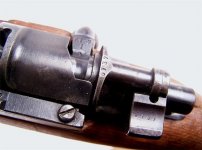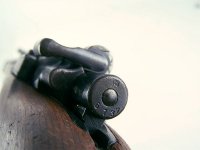How does one define or assess efficiency, - well the only criteria that matters in the midst of a war is numbers made and accepted by the military (
one can define it by cost, profit or utilization of material, but considering national socialist economic policy rarely, if ever, considered cost as a significant factor before 1941, it would be irrelevant when you are analyzing their definition of efficiency):
Here are the production numbers for each year by each firm that made rifles (
where possible taken from official postwar reports, others are estimates based upon known ranges):
BLM- 40/129k / 41/139k / 42/134k
Brno (
dot & dou)- 41/154k / 42/193k / 43/410k / 44/730k
ERMA - 40/140k / 41/90k
GW-bcd - 40/110k / 41/143k / 42/219k / 43/321k / 44/261k
S&S-JPS - 40/230k / 41/220k / 42/200k / 43/320k / 44/230k
MB- 40/200k / 41/120k / 42/110k / 43/120k
MO -
40/350k / 41/420k / 42/450k / 43/550k / 44/665k
SDP - 40/118k / 41/232k / 42/202k / 43/286k / 44/279k
As anyone can see, the firms that remained on the Kar.98k were the firms that were the largest and most efficient firms engaged in the 98k production (
MO & Brno - Brno's are deceptive for a number of reasons, one it includes both dot & dou and they were making many things plus the SS and Army were constantly meddling in production) or they were firms engaged in assembly, which was the path decided upon for future production (it became the normal method across the entire arms industry).
It is a simple fact, whether you like Mauser as a company or not, that MO and Brno were the only firms to make most of the components in house and retained high standards throughout the war, - no other firm did this to the same extent and to suggest Fritz Walther wasn't the match of Günther Quandt in his "corruption" of military and party officials is absurd, Fritz Walther, while a exceptional man in arms design, was a pig of enormous proportions, a full fledge nazi scumbag, - and there are many people who do not agree with your assessment that the real leaders in design and innovations didn't include Mauser Oberndorf... to suggest such make you look ignorant.
Regarding your "expert" reference books comments, one can only guess what you are referring too, however considering you mention Backbone and we are speaking of the 98k, that only leaves Mike & Bruce's book series, - if you have such a low regard for the books, why are you here?
Concentrating production in the most efficient firms, MO : depends how you assess 'efficiency' - Mauser was a monolithic profit motivated company that thoroughly abused its position within the armaments sector via influence peddling and in collusion with the military and party persons it had corrupted to maintain sectoral dominance and to maximise price gouging - by most objective standards MO could only be marked down as grossly inefficient - the real leaders in design and innovation (in all its facets) were Haenel, Walther and others - not Mauser
"]Anyway, an interesting and neglected topic on the forums.[/: well you're sure right about that! - so far there has been no shortage of nonsense published in the many 'expert' reference works - I would go so far as to say BBOW should get a special award for amount of nonsense appearing per Chapter in print, and most forums regurgitate what has been published without any attempt at a review - I'm going to guess that you'll have a hard time getting a deep and meaningful conversation started on that topic - but good luck on it
______________________________________________________________________________________________________________________________
[/COLOR]










